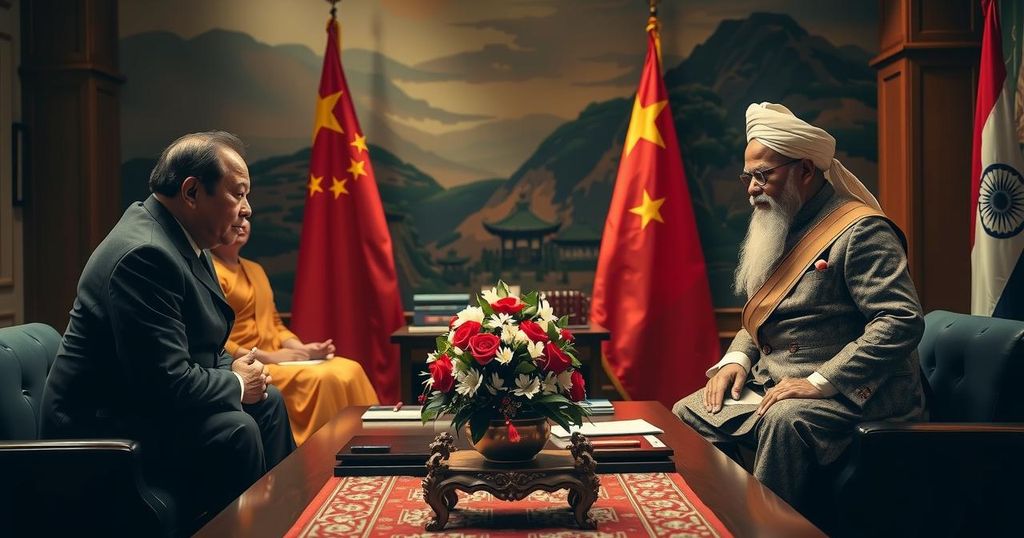At the recent BRICS summit in Russia, Indian Prime Minister Narendra Modi and Chinese President Xi Jinping sought to reset their troubled bilateral relations following a deadly border clash in 2020. The two leaders met to discuss troop disengagement along their contested border, a potentially significant step in Sino-Indian ties, raising questions about territorial control and future economic engagements amidst a backdrop of global strategic concerns.
The recent BRICS summit in Kazan, Russia, produced a significant moment for Sino-Indian relations as Indian Prime Minister Narendra Modi and Chinese President Xi Jinping engaged in their first comprehensive bilateral talks in five years. This meeting aimed to address the tense relationship that plummeted following a deadly clash in Ladakh in 2020, where at least 20 Indian soldiers and four Chinese troops tragically lost their lives in hand-to-hand combat. As part of this renewed dialogue, Indian Foreign Secretary Vikram Misri shared news of an agreement for troop disengagement along the contested border, a development that may have far-reaching implications for regional geopolitics. Experts interpret this detente as a crucial geopolitical shift in Asia, suggesting it allows India to distance itself from its alliances with the United States, particularly given concerns over perceived overreliance on those ties. However, critical questions linger after the border agreement, particularly about the uncertainties surrounding the demarcation of the Line of Actual Control (LAC) and the extent of territory regained by India. Moreover, the broader economic dimensions of India-China relations are in the spotlight, as India continues to enforce bans on Chinese apps and scrutinize investments, which has taken a toll on foreign direct investment within recent years. As both nations navigate the complexities of their bilateral relations influenced by strategic interests and economic dependencies, some analysts caution that an enduring resolution will necessitate further diplomatic engagements to fully address the myriad challenges looming over their interactions.
Sino-Indian relations have historically been fraught with tensions, particularly following the 2020 clash in Ladakh that exacerbated territorial disputes and led to military buildups on both sides of the unmarked border. The recent BRICS summit witnessed a pivotal attempt at diplomacy between the leaders of these two populous nations, set against the backdrop of increasing global scrutiny of China’s assertive policies in the region and India’s strategic partnerships with Western countries. The agreement for troop disengagement marks a potential thaw in ties, although ongoing issues, including Chinese economic activity within India and unresolved border disputes, complicate the relationship’s trajectory. This context is further heightened by recent geopolitical tensions that involve the United States, making the outcome of the Modi-Xi dialogue critically significant for future regional stability.
In summary, the meeting between Narendra Modi and Xi Jinping represents a crucial step toward rebuilding an often tumultuous Sino-Indian relationship marked by previous armed conflict and economic competition. While the troop disengagement agreement appears promising, significant uncertainties remain regarding territorial reconsolidation and broader economic interactions. Moving forward, both nations must engage in meaningful dialogue to navigate the complexity of their relationship, especially in the context of ongoing geopolitical pressures and the need for economic cooperation.
Original Source: www.aljazeera.com






